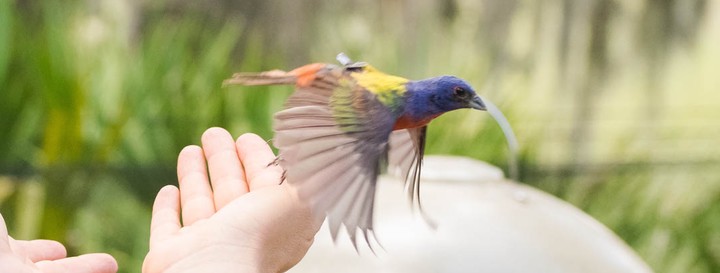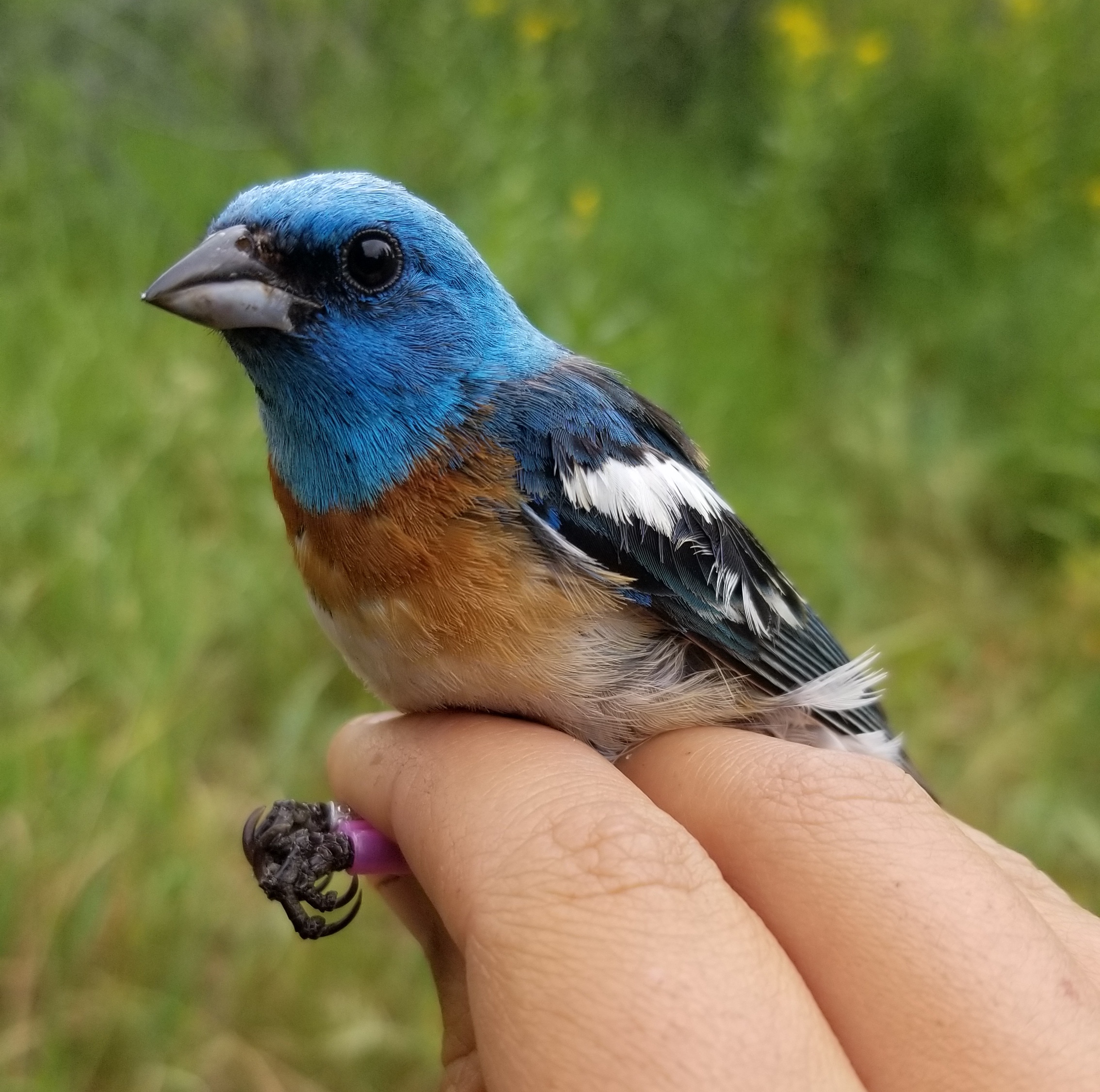Passerina buntings
 Photo by Cohen Carpenter
Photo by Cohen Carpenter
Species in the genus Passerina are among the most charismatic birds in North America. They are also ideally suited for studying the full-annual-cycle ecology of migratory songbirds because several species can be efficiently captured and monitored at bird feeders throughout the year. For the past several years, I have worked with colleagues from the Smithsonian Migratory Bird Center and the Cornell Lab of Ornithology to better understand the migration ecology, migratory connectivity, and winter distrubution of southeastern Painted Buntings (Passerina ciris) across their breeding range. To date, we have deployed nearly 300 light-level geolocators on buntings at 6 study sites spanning the latitudinal distribution of this population (northern Florida to southern North Carolina). In the spring of 2019, we established a network of RFID-enabled bird feeders to collect encounter data from buntings at each of our study sites. These data will provide critical information about seasonal survival of Painted Buntings, as well as how survival varies spatially and seasonally.

Also starting in the spring of 2019, we expanded this research to include Lazuli Buntings (Passerina amoeba) breeding in and around Logan, UT. This project uses similar tracking and RFID technologies to quantify migratory connectivity, molting/winter grounds, and survival of Lazuli Buntings along a large elevational gradient. During the summer of 2020, our 18 RFID feeders recorded over 300,000 visits by about 250 banded birds! These data are allowing us to quantify arrival and departure phenology of these populations with a high degree of precision and in the future will allow us to estimate survival and density.
Eventually we hope the data collected as part of these projects will provide insights into how breeding and non-breeding processes influence vital rates and population dynamics and whether life-history theory provides a cogent framework for understanding full annual cycle limitation in migratory birds. Stay tuned for exciting results coming soon!